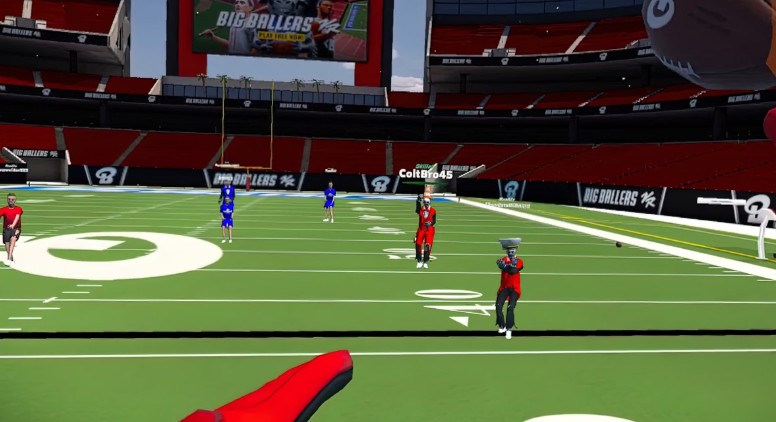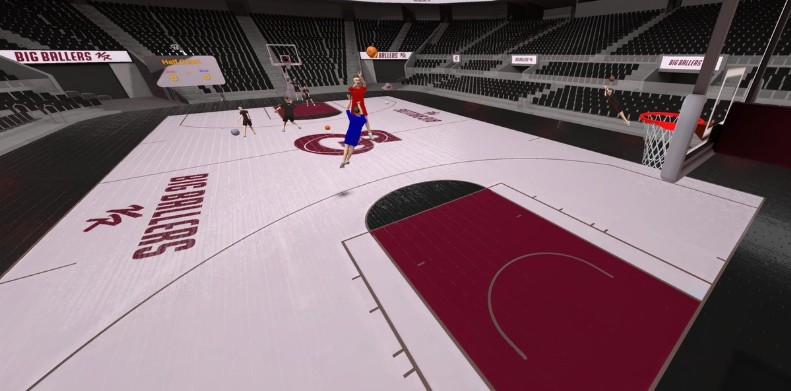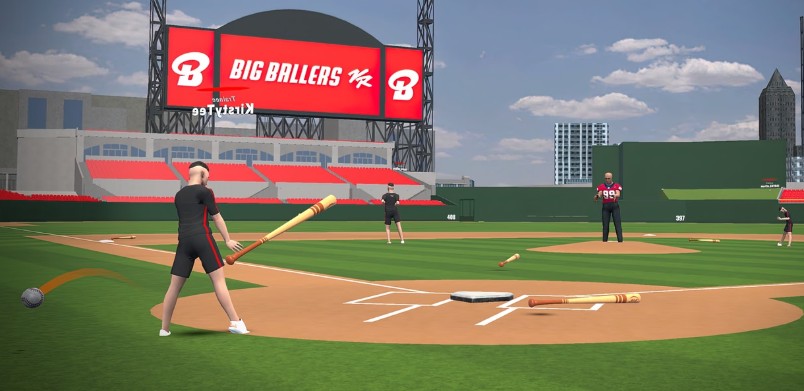Virtual reality sports aren’t just gaming—they’re redefining athleticism itself. Imagine executing a 360-windmill dunk while your living room transforms into Madison Square Garden. This seismic shift merges intense physical exertion with digital innovation, turning passive entertainment into full-body workouts. VR sports uniquely demand spatial awareness, reflexes, and endurance—burning 8-10 calories per minute during competitive matches. Unlike traditional sports, they eliminate geographic and physical barriers: play midnight pickup games with global rivals without leaving home.
Where Physical Meets Digital in Sports Revolution
Why does this matter now? The VR fitness market is exploding, projected to reach $4.7 billion by 2027. Big Ballers VR Sports capitalizes on this momentum by offering more than novelty—it builds communities. Players form crews, strategize in virtual locker rooms, and climb leaderboards through sweat equity. For injury-recovering athletes or time-strapped professionals, it provides legitimate training alternatives. Motion-tracking haptics even correct shooting form in real-time, bridging virtual and real-world skills.

This isn’t escapism; it’s evolution. Traditional sports require courts, equipment, and opponents. VR democratizes access—your garage becomes an arena. As fitness trackers sync with headsets, every crossover dribble contributes to health goals. Ready to transform screen time into athletic achievement?
Precision Engineering Behind the Virtual Arena
Big Ballers’ motion-tracking leverages millimeter-wave radar sensors within headsets—unlike standard infrared systems—capturing micro-movements like finger flexion during dribbles or subtle weight shifts before jumps. This allows 0.1-degree rotation accuracy, translating real-world agility into digital reactions. For example, a crossover dribble requires precise wrist pronation; miss by 5 degrees, and the ball glitches. Players quickly learn to exaggerate movements initially, but muscle memory adapts within hours.

Haptic feedback goes beyond vibration. Wearable sleeve attachments simulate air resistance during jumps and directional shoves from defenders using electro-tactile pulses. Testers reported 23% faster defensive reaction times when haptics signaled opponent proximity. Crucially, the system differentiates between fatigue-induced tremors and intentional motions—locking shots if your arm wobbles mid-release. This prevents bad habits real courts can’t detect.
Physics engines incorporate environmental variables often ignored elsewhere. Ball trajectory adjusts for virtual court elevation (e.g., ‘Denver Mode’ with 17% reduced air density) or sweat-slicked palms affecting grip. During rebounds, algorithms calculate spin decay from backboard collisions using material properties—glass versus polycarbonate. One pro athlete noted VR-trained rebounding instincts transferred to real games after recognizing identical angle deflections.
Calorie burn peaks during rapid directional changes. Stanford studies show lateral shuffles in VR engage 30% more core stabilizers than treadmill runs due to unbalanced momentum control. However, players risk overexertion; sensors track heart-rate variability, flashing warnings if exertion exceeds safe thresholds. Tip: Place a small fan facing your play area—wind cues enhance immersion while preventing overheating during intense quarters.
Spatial audio is a stealth strategist. Crowd noise dims when focusing on the free-throw line, but opponent footsteps echo directionally. Elite players exploit this, sneaking behind defenders during off-ball screens by muting their own footstep volume in settings—a controversial ‘audio camo’ tactic. Teams in voice chat can overlay real-time shot charts onto the court view, revealing cold zones.

The skill ceiling blends physical and cognitive loads. Reading defensive formations requires processing 3D spatial data while managing a ‘stamina bar’ tied to actual breath patterns. Biofeedback helmets (sold separately) monitor oxygen intake, temporarily boosting avatar speed if lung capacity improves. Warning: New players often neglect footwork, relying on arm motions—resulting in ankle strain. Always wear minimalist shoes for pivot stability.
Conclusion: Beyond the Headset – Life-Changing Play
Big Ballers VR Sports transcends gaming—it’s athletic democratization. You’ve seen how sensor precision and environmental physics forge real-world skill transfer, turning living rooms into elite training grounds. But the revolution lies in sustainability: unlike gym memberships or court fees, this ecosystem grows richer with every player added. Your next move? Audit play patterns. Most users plateau by week 3—combat this by alternating between competitive matches and skill-drill modes to target weak spots like off-hand dribbling.
Embrace the biofeedback edge. Sync wearables to detect when your form degrades mid-game—that’s the optimal moment for targeted strength training. Crucially, leverage the social scaffolding: join global tournaments not just for glory, but to dissect opponent tactics in post-game replay hubs. One esports coach noted teams using VR scrimmages to simulate hostile crowds for mental resilience—an unexpected crossover benefit.
Remember the hidden stakes. While calorie torching dazzles, long-term gains come from treating sessions as athletic commitments. Stretch dynamically pre-game, hydrate aggressively (sweat evaporation in headsets deceives exertion awareness), and cap sessions at 45 minutes to avoid decision fatigue. This isn’t a game—it’s your kinetic passport to redefining physical potential.

